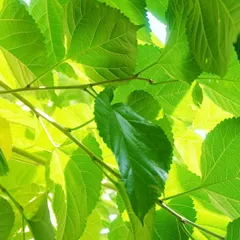Interior Wind
The information provided here is not a replacement for a doctor. You shouldn't use it for the purpose of self-diagnosing or self-medicating but rather so you can have a more informed discussion with a professional TCM practitioner.
At a glance
Preliminary reading: What is a pattern? The concept of Interior The concept of Wind
Key attributes
Chinese name: 内风 Pinyin name: Nèi Fēng
Pattern nature: Full/Empty
Pattern hierarchy: General pattern
Causes
Common causes: 1. External Wind and Heat, 2. Diet, 3. Emotional stress, 4. Physical over-exertion, 5. Profuse Blood lose, 6. Unhealthy diet or alcohol abuse
Diagnosis
Common symptoms: Coma Tics Tremor Dizziness Paralysis and six other symptoms
Pulse type(s): Fine (Xi), Rapid (Shu), Wiry (Xian)
Treatment
Treatment principle: Pacifies Interior Wind, subdue Liver Yang, nourish Liver and Kidney Yin, nourish Liver Blood Clear the Liver, drain Fire
Common formulas: Tian Ma Gou Teng Yin Ling Jiao Gou Teng Tang Liu Wei Di Huang Wan and five other formulas
Pathology
Interior Wind is mostly referred to be the Liver Wind. There are 4 types of Interior Liver Wind due to the original causes:
1. Liver Wind agitating Internally due to Liver Fire
2. Liver Wind agitating Internally due to extreme Heat
3. Liver Wind agitating Internally due to Liver Yang Rising
4. Liver Wind agitating Internally due to Liver Blood Deficiency
Causes
External Wind and Heat: During acute febrile diseases such as measles, encephalitis and meningitis, external Heat can invade and penetrate deeply into the Blood level and stir up the Wind. It is more common among children.
Diet: If excessive Liver Qi rises, it can cause Liver Yang Rising. If not treated for some year, it agitates internal Liver Wind. Eating in a hurry, eating while working or getting angry at meal time can lead to the pattern.
Emotional stress: Emotional problems, such as anger, frustration and resentment, are the most obvious causes for this pattern, especially if these emotions are suppressed over a very long time. Anger drives Rebellious Liver Qi upwards and cause Liver Yang Rising. If not treated for some year, it agitates internal Liver Wind.
Physical over-exertion: Excessive physical exercise mainly harms the Spleen Yang. As a result, the Spleen's foods transforming and transporting function is impaired, thus less Blood can be generated and stored in the Liver. Excessive exercise also injures the sinews. Since the Liver controls, moistens and nourishes sinews, which in long run, can give rise to Liver Blood Deficiency. If not treated for years, it can eventually agitate internal Liver Wind.
Profuse Blood lose: The Liver stores the Blood. Therefore a serious haemorrhage, such as long term heavy periods, can lead to Liver Blood Deficiency. If not treated for many years, it can agitate internal Liver Wind.
Unhealthy diet or alcohol abuse: Heat in the Liver (and subsequent Wind) can arise from excessive intake of alcohol, drugs, caffeinated foods and drinks, hot foods such as lamb and beef and fried and greasy foods.
Diagnosing Interior Wind
Diagnosing a pattern in Chinese Medicine is no easy feat and should be left to professional practitioners. In particular one has to know how to differentiate between different types of pulses and tongue coatings, shapes and colors as well as learn to read from a long list of seemingly unrelated symptoms.
Pulse type(s): Fine (Xi), rapid (Shu) or wiry (Xian)
Main symptoms: Coma Tics Tremor Dizziness Paralysis Headaches Convulsions Eye deviation Tremor of limbs Mouth deviation Numbness in the limbs
Diagnosis commentary: Key characteristic symptoms of this pattern are the convulsions, devastation of eyes and mouth, dizziness and tremor.
Treating Interior Wind
Treatment principle
Pacifies Interior Wind, subdue Liver Yang, nourish Liver and Kidney Yin, nourish Liver Blood
Clear the Liver, drain Fire
Herbal formulas used to treat Interior Wind

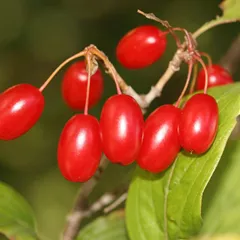
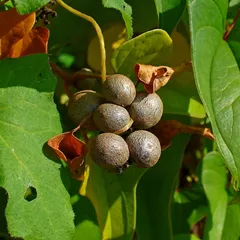
The top herbs in Liu Wei Di Huang Wan are Prepared Rehmannia (Shu Di huang), Cornelian Cherries (Shan Zhu Yu) and Yam (Shan Yao)
Liu Wei Di Huang Wan
Source date: 1119 AD
Number of ingredients: 6 herbs
Key actions: Enriches the yin and nourishes the Kidneys.
Formula summary
Liu Wei Di Huang Wan is a 6-ingredient Chinese Medicine formula. Invented in 1119 AD, it belongs to the category of formulas that nourish Yin and tonify.
Besides Interior Wind, Liu Wei Di Huang Wan is also used to treat Blood Deficiency or Yin Deficiency.



The top herbs in Si Wu Tang are Prepared Rehmannia (Shu Di huang), White Peony Roots (Bai Shao) and Dong Quai (Dang Gui)
Si Wu Tang
Source date: 846 AD
Number of ingredients: 4 herbs
Key actions: Restores and nourishes Blood. Stimulates Blood circulation.
Formula summary
Si Wu Tang is a 4-ingredient Chinese Medicine formula. Invented in 846 AD, it belongs to the category of formulas that tonify Blood.
Besides Interior Wind, Si Wu Tang is also used to treat Blood Deficiency or Blood Stagnation.



The top herbs in Qi Ju Di Huang Wan are Prepared Rehmannia (Shu Di huang), Cornelian Cherries (Shan Zhu Yu) and Yam (Shan Yao)
Qi Ju Di Huang Wan
Source date: 1350 AD
Number of ingredients: 8 herbs
Key actions: Nourishes Kidney and Liver Yin. Improves vision.
Formula summary
Qi Ju Di Huang Wan is a 8-ingredient Chinese Medicine formula. Invented in 1350 AD, it belongs to the category of formulas that nourish Yin and tonify.
Besides Interior Wind, Qi Ju Di Huang Wan is also used to treat Liver Yang Rising or Liver Yin Deficiency.
Ling Jiao Gou Teng Tang
Source date: Qing dynasty
Number of ingredients: 10 herbs
Key actions: Cools the Liver. Extinguishes Wind. Increases Fluids. Relaxes the sinews.
Formula summary
Ling Jiao Gou Teng Tang is a 10-ingredient Chinese Medicine formula. Invented in Qing dynasty, it belongs to the category of formulas that pacify and extinguish Internal Wind.
Besides Interior Wind, Ling Jiao Gou Teng Tang is also used to treat Liver Yang Rising or Liver Wind agitating Internally due to extreme Heat.
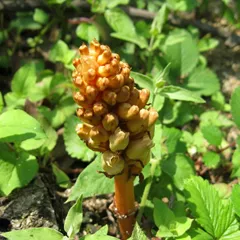

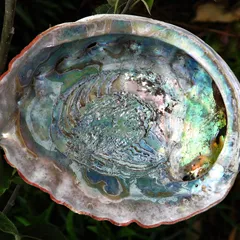
The top herbs in Tian Ma Gou Teng Yin are Gastrodia Rhizomes (Tian Ma), Gambir Stems And Thorns (Gou Teng) and Abalone Shells (Shi Jue Ming)
Tian Ma Gou Teng Yin
Source date: 1958 AD
Number of ingredients: 11 herbs
Key actions: Calms the Liver. Extinguishes wind. Invigorates the blood. Clears heat. Tonifies the Liver and Kidneys.
Formula summary
Tian Ma Gou Teng Yin is a 11-ingredient Chinese Medicine formula. Invented in 1958 AD, it belongs to the category of formulas that pacify and extinguish Internal Wind.
Besides Interior Wind, Tian Ma Gou Teng Yin is also used to treat Liver Yang Rising or Liver Wind agitating Internally due to extreme Heat.



The top herbs in Bu Gan Tang are Prepared Rehmannia (Shu Di huang), White Peony Roots (Bai Shao) and Dong Quai (Dang Gui)
Bu Gan Tang
Source date: 1742 AD
Number of ingredients: 7 herbs
Key actions: Tonifies and regulates the Blood. Nourishes the Liver Yin.
Formula summary
Bu Gan Tang is a 7-ingredient Chinese Medicine formula. Invented in 1742 AD, it belongs to the category of formulas that tonify Blood.
Besides Interior Wind, Bu Gan Tang is also used to treat Liver Blood Deficiency or Liver Wind agitating Internally due to Liver Blood Deficiency.
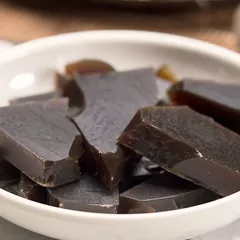
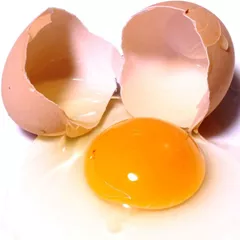

The top herbs in E Jiao Ji Zi Huang Tang are Donkey-Hide Gelatin (E Jiao), Chicken Egg Yolks (Ji Zi Huang) and Unprepared Rehmannia (Di Huang)
E Jiao Ji Zi Huang Tang
Source date: the Qing dynasty
Number of ingredients: 10 herbs
Key actions: Nourishes Yin. Nourishes Blood. Calms the Liver. Extinguishes Wind.
Formula summary
E Jiao Ji Zi Huang Tang is a 10-ingredient Chinese Medicine formula. Invented in the Qing dynasty, it belongs to the category of formulas that pacify and extinguish Internal Wind.
Besides Interior Wind, E Jiao Ji Zi Huang Tang is also used to treat Liver Wind agitating Internally due to Liver Blood Deficiency or Liver Wind agitating Internally due to Liver Yang Rising.
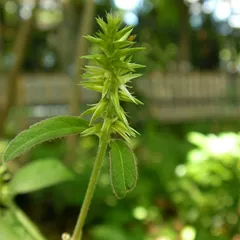
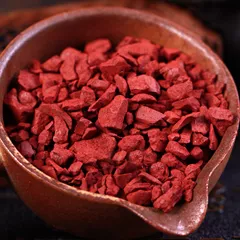
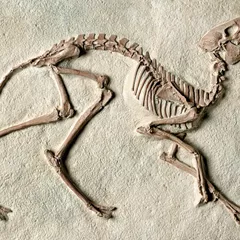
The top herbs in Zhen Gan Xi Feng Tang are Achyranthes Roots (Niu Xi), Hematite (Dai Zhe Shi) and Dragon Bones (Long Gu)
Zhen Gan Xi Feng Tang
Source date: 1918 AD
Number of ingredients: 12 herbs
Key actions: Sedates the Liver. Axtinguishes Wind. Nourishes the Yin. Anchors the yang.
Formula summary
Zhen Gan Xi Feng Tang is a 12-ingredient Chinese Medicine formula. Invented in 1918 AD, it belongs to the category of formulas that pacify and extinguish Internal Wind.
Besides Interior Wind, Zhen Gan Xi Feng Tang is also used to treat Empty-Wind agitating in the Interior or Liver Wind agitating Internally due to Liver Yang Rising.
Diet recommendations
Check specific diet and lifestyle suggestions according to the cause of the Interior Wind


